
Local restaurants and chefs have developed their recipe for success in Laguna before branching out to open other locations across the region and beyond.
By Sharon Stello
Erik De Marchi, chef-owner of Oliver’s Osteria, the charming Italian restaurant in Laguna Canyon that has been lauded on Michelin Guide’s Bib Gourmand list for the past two years, is poised to open a second, more laid-back restaurant in Irvine this fall. Featuring lighter, brighter decor, Oliver’s Trattoria will offer handmade pizza and lean heavily on pasta dishes rather than meat or seafood entrees, but will retain the authentic flavors of De Marchi’s hometown in Emilia-Romagna, Italy, which his devoted customers have come to know and love.
De Marchi is following in the footsteps of several chefs and restaurateurs who have established themselves in Laguna and expanded from here. Consider the vegetarian-friendly Zinc Cafe, which opened its Laguna flagship in 1988, followed by locations in Corona del Mar, LA and West Hollywood with another coming soon to Orange. Or zpizza, which has roots in Laguna and eventually franchised. Nick’s began in Laguna before locations sprouted up from Pasadena down to Del Mar—not to mention the South of Nick’s spin-off with a menu of Mexican-inspired fare. Starfish Laguna also started locally, opening its second location in nearby Newport Beach earlier this year. And “Top Chef” favorite Amar Santana’s eponymous Broadway by Amar Santana in Laguna was followed by Vaca in Costa Mesa, which will make the leap to downtown LA for a second location in late 2024.
There’s just something about Laguna’s culinary landscape, its influx of travelers and loyal locals who appreciate fine cuisine, that provides a perfect setting for those starting out in the industry to learn and grow. So, when it came time for De Marchi to launch his first restaurant in 2018, Laguna quickly caught his eye.
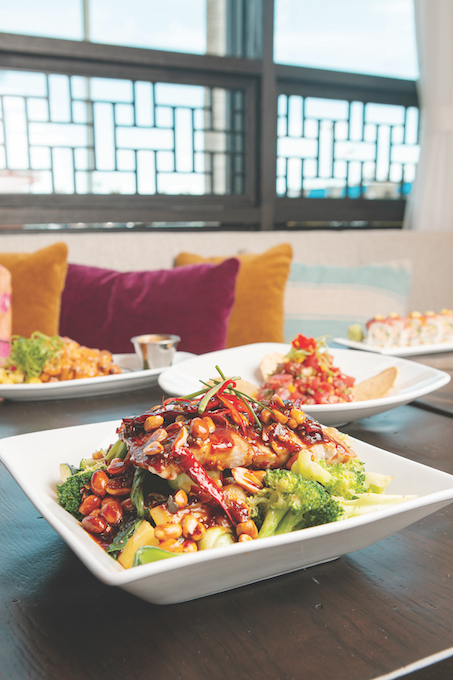
“I had been working toward … opening my own restaurant for years and, when it was finally time, I knew I wanted to go outside of Los Angeles,” De Marchi recalls. “I wanted to bring my authentic cuisine somewhere really special. … Laguna Beach is one of the most beautiful cities in Orange County. It is such an artist community and is breathtaking. It truly has many similarities to Italy in so many ways, with its coastline and mountains and I always felt it was a great place for Oliver’s Osteria.”
Now, five years later, De Marchi knew it was time to expand. “We have had great success in Laguna Beach and I wanted to bring a slightly different concept to another great location in Orange County. This opportunity came up in Irvine, so the timing worked out perfectly,” he says, adding that many of his customers come from the Irvine area so he wanted to offer a place closer to them.
“This is not an easy business and takes hard work and attention to detail,” he says. “I have learned so much over these last few years at Oliver’s Osteria, so I feel like I know the formula. I am very blessed and have an amazing team. … It takes a village, that is for sure.”
Loyal Locals
That village refers to both the workers and the customers who support a restaurant. It’s a notion that rings true for Marc Cohen, chef-owner of 230 Forest Avenue, who cut his culinary teeth on the East Coast, working in some of the finest dining establishments in the Washington, D.C., area before an opportunity lured him to Laguna. In the early 1990s, he was helming the kitchen of a restaurant in Old Town Alexandria, Virginia, which had just received numerous accolades when one of the company’s leaders had some friends come in for dinner.
They were from a small coastal community in California and had been talking about opening a cafe. After meeting Cohen and falling in love with the restaurant and what he had accomplished in Alexandria, they asked if he would be interested in coming and taking a look at Laguna. And the rest, as they say, is history. So what was it that hooked Cohen?
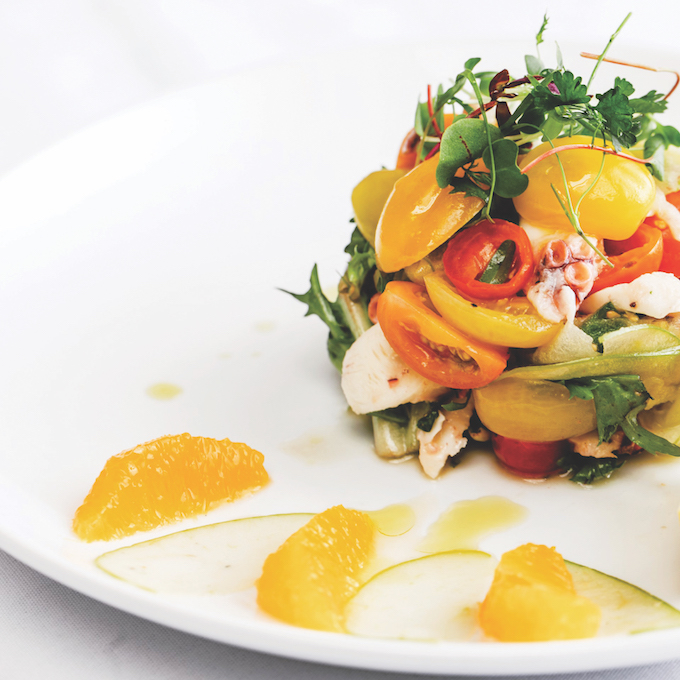
“Well, for me, it was the locals and the people that lived and worked in Laguna,” he says. “I really liked the atmosphere and I liked the opportunity that I thought it provided to bring what, at that time, was a new kind of food to the area and that I really believed in. … The customer base had been well-traveled and understood different types of cuisine and gave me the opportunity to do and create similar to the East Coast, similar to Washington, D.C., where I had dealt with a lot of diplomats and people from all over the world.”
And, so, he opened 230 Forest Avenue in 1995, followed by Opah Seafood Grill in Aliso Viejo, Irvine and Rancho Santa Margarita; the latter two eventually closed when the rent increased. It was 2008 when he launched a second Laguna restaurant,
Watermarc, which was “an opportunity for me to play a little bit more and be a little more risky and really have fun with the food,” Cohen says. Although it was successful, the small space couldn’t survive during the pandemic and ultimately closed.
But Cohen stays busy keeping customers happy at two restaurants. “I want them to enjoy more of a bistro environment with upscale, quality food and plating [that] … you might expect in a [white] tablecloth restaurant or a very fine dining restaurant,” he says, “… but the atmosphere is much more relaxed because that’s how we live in Southern California.”
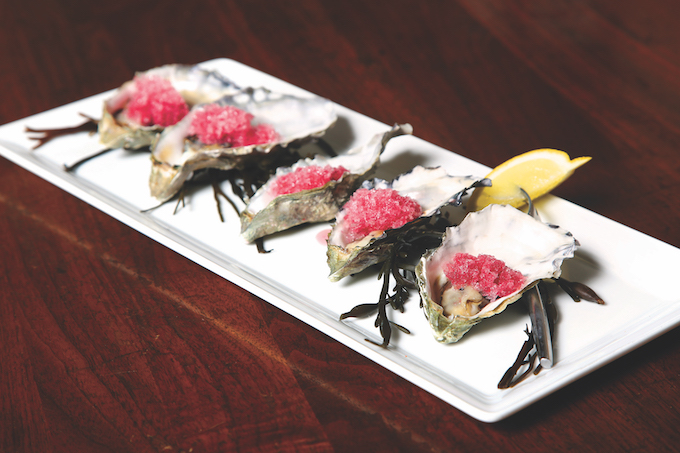
Although dishes like crab rangoon spring rolls and day boat scallops with sweet corn risotto and heirloom tomato salad prove popular, it’s the hazelnut-crusted Alaskan halibut, added to the lineup 29 years ago, that remains the star at both places even though it’s no longer officially on the menu; it’s now offered as a special when halibut’s in season—eight months of the year. “The customers have not allowed me to remove it, no matter how many times I say, ‘Let’s try something different.’ They always want it back,” Cohen says.
Locals are also the key to success at Broadway by Amar Santana. “Laguna is a small community with 23,000 residents, but they are everything to us,” says chef Amar Santana, who opened the eatery with business partner Ahmed Labbate in 2012. “Broadway’s business was built by the locals. It’s their restaurant. We have regulars who come in several times a week.”
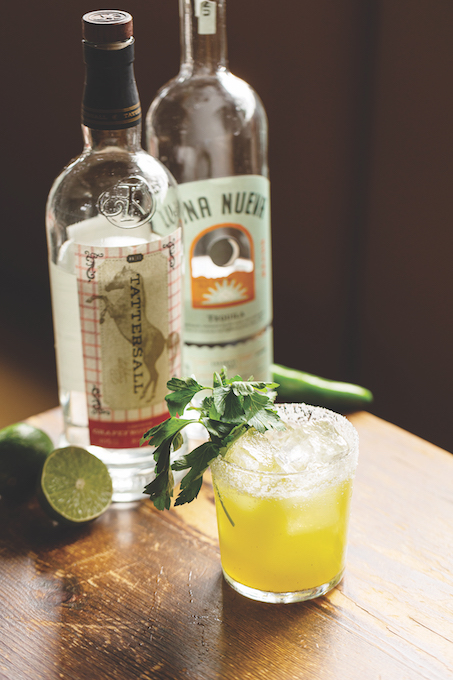
Originally from the Dominican Republic, Santana moved to Queens, New York, when he was a teenager. Accidental enrollment in a cooking class, in which he excelled, put him on a path to intern at famed French restaurant Chanterelle, participate in a trip to Le Cordon Bleu in London and attend the Culinary Institute of America on a full scholarship. He became the youngest sous chef at the demanding Aureole in New York and served on the opening teams of Charlie Palmer restaurants in Reno, Nevada, and Dallas before becoming executive chef of Charlie Palmer at South Coast Plaza. But Santana dreamed of eventually having a place with his name on it.
“Originally, Ahmed and I were looking in Newport and … [Corona del Mar] for our first restaurant location,” he says. “We had opened Charlie Palmer’s at South Coast Plaza and many of our regulars lived in those communities. However, business was booming and there was very little space available. We were shown the former Five Feet [spot] in Laguna on Glenneyre [Street] and we felt good about it.”
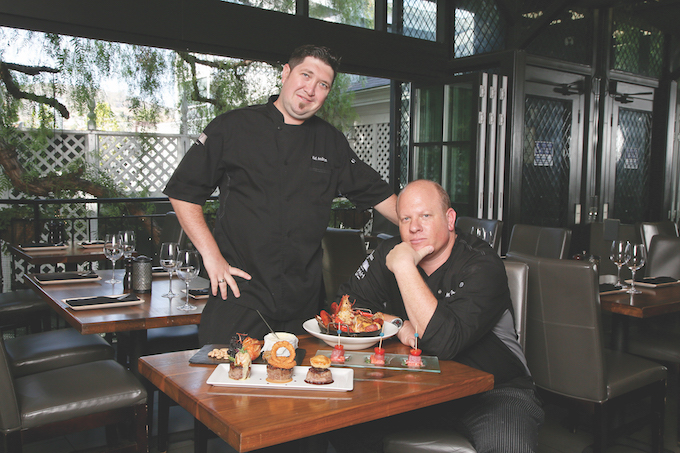
Broadway exudes an industrial New York loft vibe with a brick wall, distressed finishes and high ceiling beams as well as an open kitchen that’s center stage to those sitting at the chef’s counter. Santana wants guests to “have a great time, … feel comfortable, like they’re in their own home, and can’t wait to come back.”
Santana says his approach to cooking is “making good food with bold flavors—food [that] people enjoy, … [then] come back and tell their friends. If I ever hear, ‘Your food is interesting,’ I know we’re in trouble,” he says. That seems unlikely with tempting dishes like Japanese hamachi sashimi with avocado sorbet, grilled smoked pork chop with caramelized figs and the whimsical Oh Beehive dessert with lemon goat cheese mousse and honey ice cream.
After three years of running Broadway, Santana and Labbate decided to open a new concept. As Santana says, “We asked ourselves, ‘What do we like to eat?’ ” The answer: Steaks and tapas for sharing, which became the foundation of Vaca.
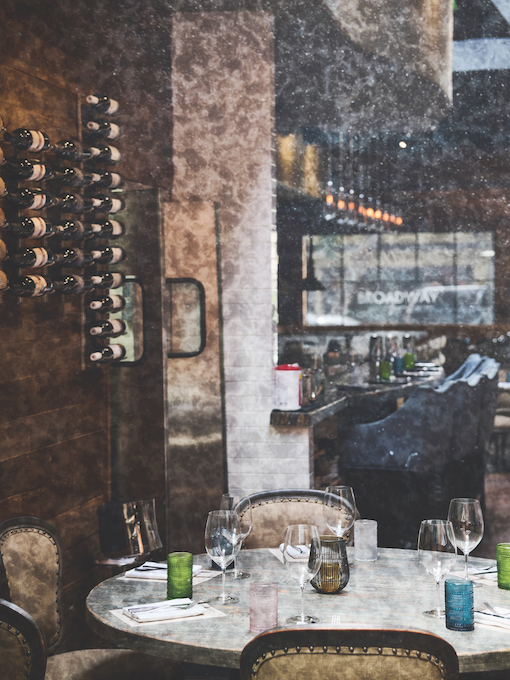
“Vaca is more casual, family-style dining. It fits a lot of different occasions and dining needs. We’ve got the components of charcuterie/cheese, tapas, paellas and our steaks,” Santana explains. “Broadway is highly creative, where I get to indulge in all sorts of unique creations. Both places have great cocktail programs and wine selections.”
They chose Costa Mesa for Vaca because, being from New York, they understood the value of nearby theaters, a shopping center, office buildings and freeway access, which would all bring people to the area. And, after looking for the perfect place in LA for years, they finally found the right fit: a space nestled inside the new Beaudry residential building on West Seventh Street in downtown LA.
Lessons Learned
As local chefs spread their wings, they take with them experience gained from their first ventures in Laguna. Some of these pearls of wisdom include “the importance of establishing your reputation and building [up your] business,” Santana says.
Cohen adds that “it’s very important to understand who your customers are and what they are accepting of.” He recalls needing to slowly educate the clientele “so that they understood what we were serving and that fresh fish tasted different from what they were used to tasting.”
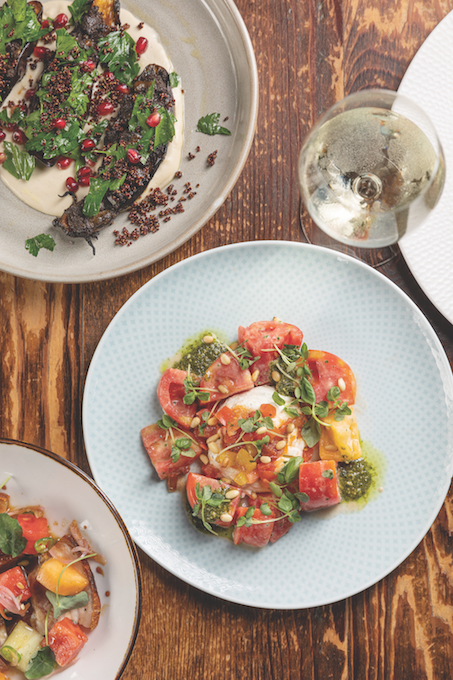
“You have to create a trust with the guests so that they understand you’re doing certain things for a reason and it’s in their best interest, but … there’s a trust you have to build and a bond between the kitchen and the guests,” he says.
At Starfish, Gretchen McConnell has gleaned a lot since 2011 when she and her husband, Archie, founded the restaurant focused on coastal Asian cuisine with dishes from sushi to Thai coconut chicken satay, Vietnamese pho soup, dumplings, wontons, noodle dishes and more.
“Our Laguna location has taught us countless lessons over the years to take with us as our company’s journey continues,” McConnell says. “The No. 1 thing that has driven our success over the past 12 years is our teams. Hiring and cultivating passionate and committed individuals is the foundation of the Starfish brand, the heartbeat of our operations and the key to our future growth.”
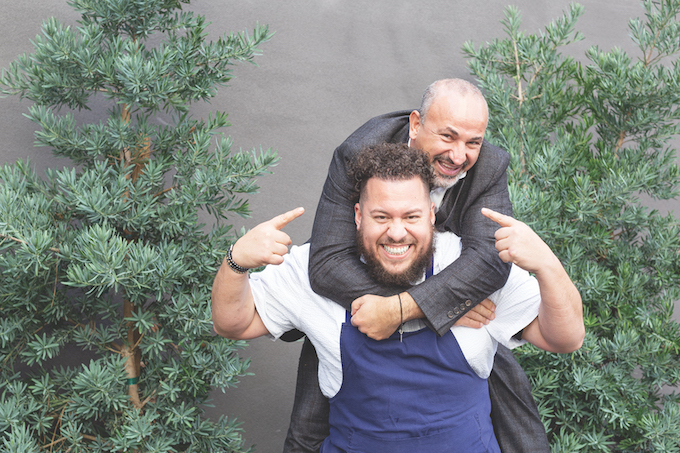
Cohen echoes that sentiment, saying he values the people that work at his restaurants. No doubt, the workers are the backbone of any business.
“I always believe family first, restaurants second,” Cohen says. “… We’ve tried very hard to promote that in the restaurants. And I’d really like to thank not only the customers that have been with me for the last 29, 30 years, but the majority of my staff has been with me for over 20 years … and the same is said for Opah.
“… We really try to not only work for the customer, but work for each other. It’s a very, very, very difficult business and it’s very important to me that we take care of each other. I think one of the most important things is to thank those people that have trusted me with their jobs and their families.”
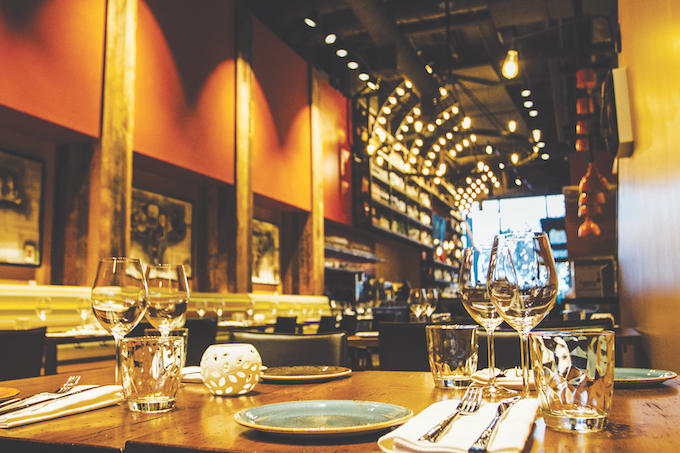
Much has also been learned from the changing times in Laguna. “Our motivation for expansion was always fueled by our continued growth, both within our organization and through building guest relationships,” McConnell says. “I’ve worked in Laguna for over 20 years, and it has changed a lot. I remember those cold and damp November Tuesdays when there wasn’t a soul in town, and now the amount of year-round tourism and diner flexibility has changed all that.”
Cohen says a big shift he’s seen relates to customers’ increasing diet restrictions. “If you go back to 2000, I’ve been through 25 fad diets,” he says. “A lot of things I’ve seen change the most … have been more people have become allergic to more items. That really was not as much of an issue when I was getting into the business, but we’ve definitely seen that develop over the last maybe 12 to 15 years. You see a lot more allergies and special requests. … We make everything to order, so we do the best we can to eliminate any of those concerns.”
Of course, the COVID-19 pandemic also changed the dining scene and what customers expect from restaurants.
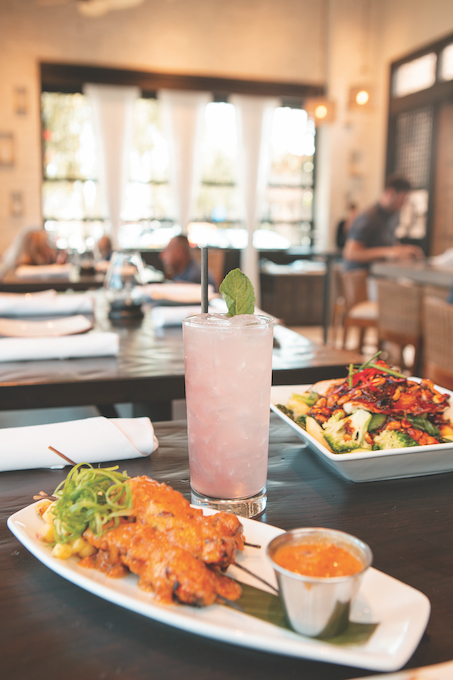
“We looked at six different locations leading up to 2020 and we had a perfect space in Newport Beach selected in the summer of 2019,” McConnell shares. “As with all businesses, COVID changed the landscape in which they operated. For Starfish, we witnessed a dynamic shift in demand for our cuisine in our takeout operation.
“As we navigated those 18 months, we quickly realized we had a whole new market segment at our fingertips. Not only did we have the opportunity to maintain our long-standing guest relationships through connecting our regular diners to their favorite cuisine, [but] … with the delivery platforms already in place, we were able to reach far beyond Laguna Beach for the first time.”
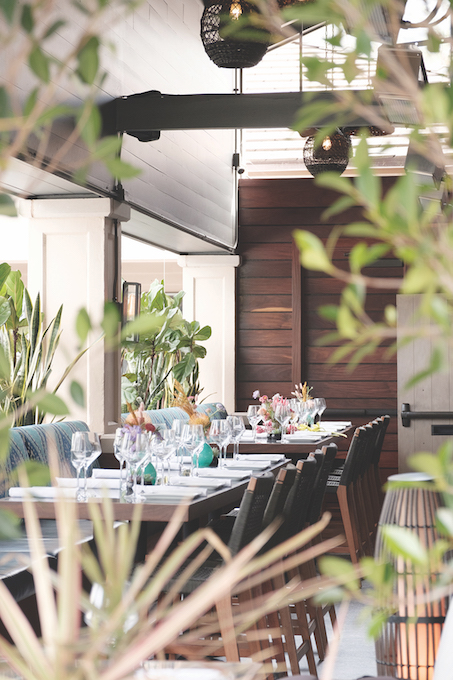
So the Starfish team moved forward with opening a Newport location, knowing the next restaurant “would have to embody the experiences we’d just endured,” McConnell says. The new space, which opened in May, features a more intimate setting with floor-to-ceiling windows to let in a bright, open-air feel. It offers the same food menu as Laguna, but, on the bar side, only beer, wine and libations made with premium soju vodkas, tequilas and sake rather than hard liquor. Catering is also a big part of the business at this location.
Building a Brand
For Scott McIntosh and his wife, Rosemary, co-owners of Reunion Kitchen & Drink and Asada Tacos & Beer, both at Boat Canyon Shopping Center in north Laguna, it’s been a long road building their small chain of restaurants.
After working his way up through the ranks to the executive level at Claim Jumper, assisting well-known local restaurateur David Wilhelm (French 75, Sorrento Grille, Jimmy’s Famous American Tavern) and helping to establish Nick’s—which was started in Laguna Beach by the son of Claim Jumper founder Craig Nickolofff—McIntosh decide to open his own venture, Asada, in 2011 on South Coast Highway. That space had been vacated by Javier’s, an upscale Mexican restaurant that moved to Crystal Cove Shopping Center and expanded from there; Javier’s now has six locations including Las Vegas and Los Cabos, Mexico.
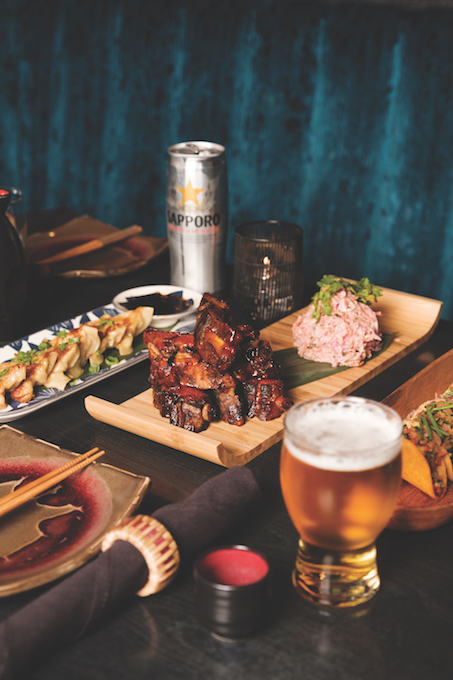
Asada proved popular, but after two years, had to close due to unresolved issues with the landlord. And McIntosh had to file for bankruptcy. “I sunk everything that I had into that place at the time, including kids’ tuition for college,” McIntosh says. “… It was really hard for me to decide this was what we were going to have to do. But, … I learned this is what it’s really going to take to make it work going forward.”
It wasn’t long before a former investor invited him to open a new concept in Anaheim Hills. “And so I penciled out Reunion,” McIntosh says. “… It’s basically a reunion of all the different items that worked for me in the past. You name it, from the butter cake to the meatloaf.” The mostly comfort food haven—think pot pies, rich and flavorful USDA Prime burgers and Rosemary’s fried chicken with sausage gravy—was a hit. McIntosh expected to make $3 million in the first year; the restaurant raked in $5 million.
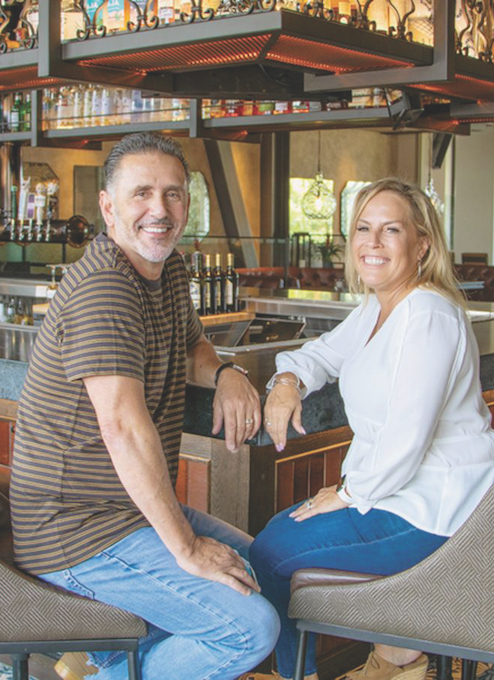
Reunion has since grown to four locations including one in Corona that opened a few months ago. And, of course, one in Laguna. “I think there was a certain amount of trepidation after I [closed Asada there] and I think, for me, it was a personal challenge [to come back and] … make it this time,” he says. And he knew the obstacles going in. “Laguna’s seasonal. There’s times when there’s feast and there’s times when there’s famine,” he adds.
Although it’s only 14 tables, Reunion has found its niche in Laguna. “I could go in there tomorrow and know by first name probably 80% of the guests who are sitting in the restaurant,” McIntosh says. “That’s the main reason why I like Laguna. It’s the people that really support it. … And a lot of people that live right up the hill, they come down, they show up a few times a week and take care of us. So we feel obligated to take care of them.
“ … The MacGillivrays, they have been big supporters of me and Rose since the old Asada. They show up with their bike club every week, rain or shine, just people like that. It’s refreshing. We really love Laguna for its people more than anything else.”
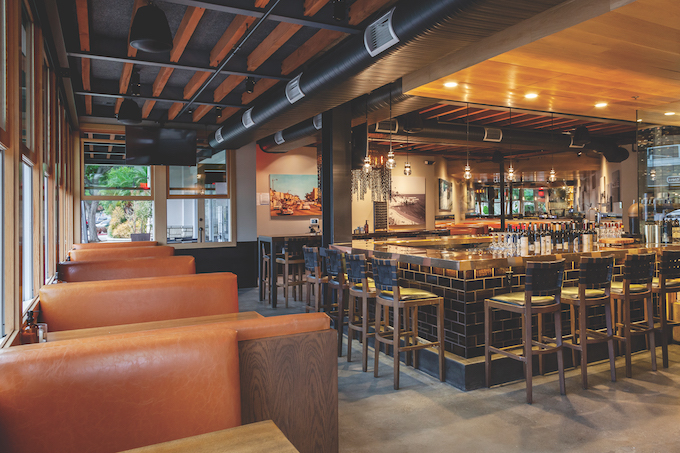
Support is also there for McIntosh’s new iteration of Asada—called Asada Tacos & Beer—just a few doors down from Reunion. Think crispy tacos with poblano cream, bacon-wrapped jalapenos, salsa quemada that’s served warm and chile rellenos that are “off the hook,” McIntosh says.
And his original vision for Asada has come to fruition in Asada Cantina & Kitchen, which opened during the pandemic at the Outlets at San Clemente. The 5,000-square-foot, full-service restaurant features an elevated Asada menu, a tequila bar and fresh tortillas made in-house.
Inspired Innovation
Sid Fanarof, founder of zpizza, achieved success by pushing the envelope. But it was an uphill climb at first.
Fanarof had gone through a divorce in the early 1980s and was trying to figure out what to do next with his career. He owned Spigot Liquor and was thinking about opening a small Mexican restaurant—even though he had grown up helping with his father’s catering company and swore he would never work in the food industry again.
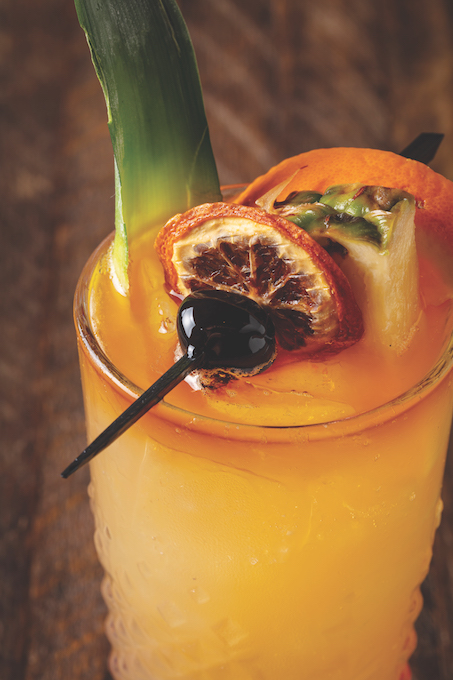
“But then I saw the expansion of Mexican food and I thought Laguna would be a great place to do it, and do it consciously,” Fanarof says of his focus on healthy ingredients.
After he signed a lease for a space in Aliso Creek Shopping Center, a wine saleswoman came by and offered to partner on the venture, but wanted it to be a French restaurant. They finally settled on a pizza joint, as the storefront was previously home to a take-and-bake pizza place and some of the equipment was still there.
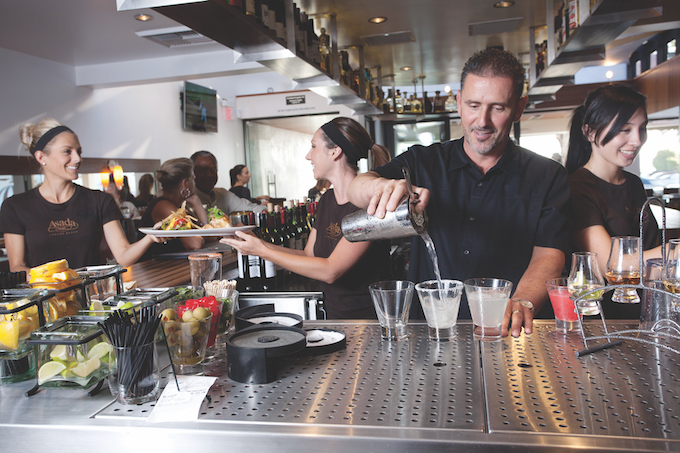
The first few months were frustrating. Neither Fanarof nor his partner had ever made pizza. Fanarof says he didn’t even eat pizza. He experimented with dough recipes, but ended up throwing it against the wall when it got stuck in the sheeter machine. Once they finally got rolling, he needed customers, so he would stand outside of the nearby grocery store and offer samples. “That was my marketing,” he recalls.
The business finally took off and Fanarof continued to innovate with healthy ingredients. He created a Mexican pizza with fresh salsa and fresh chicken, he sourced pepperoni made out of beef shoulder without nitrates and he used real cheese from grass-fed cows in Wisconsin. He began experimenting with vegetarian options and gluten-free crust, then pushed the envelope further with cauliflower crust. He often traveled to food industry conventions to learn about the latest trends.
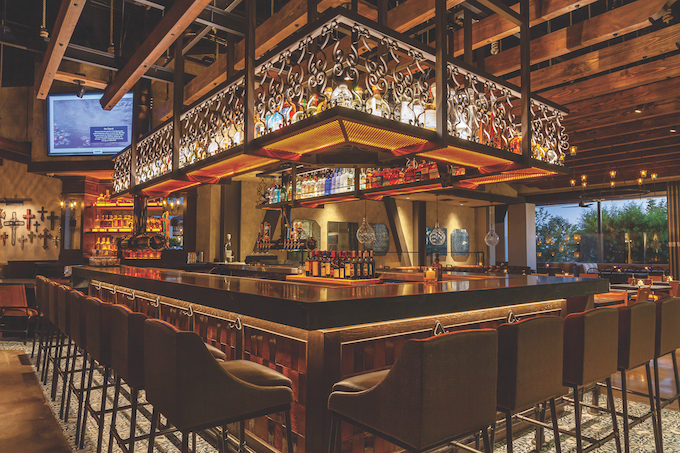
“So I would take foods that were happening and figure out how to put them on pizza,” Fanarof says. “But everything I did was always health-conscious.”
And it worked in Laguna because it’s a unique town, he says. “If you give people the right food, they’ll come [and] they’ll buy it,” he adds.
At one point, Fanarof recalls, a well-known food critic came and wrote that zpizza had “the best crust on the planet,” which caught the attention of those at the Irvine Co. looking for eateries to fill their shopping centers. So he opened a zpizza across from UC Irvine, selling by the slice to entice broke college students. “It became a hit and we had lines around the place,” he says, adding that lines would extend all the way to the movie theater during big blockbusters.
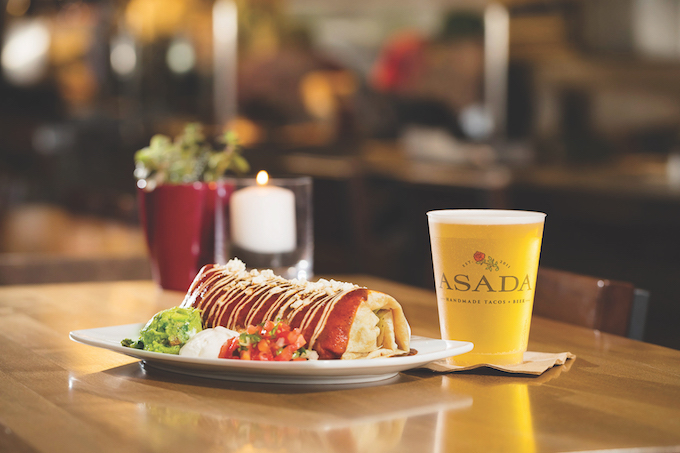
Eventually, Fanarof was approached by someone who wanted to franchise the business. They inked a deal and it expanded to more than 100 stores across the country. Fanarof remained owner of the 10 local shops and oversaw food development for the company. But it didn’t work out, having restaurants so far away and in markets that weren’t health-conscious like Laguna.
“It wasn’t sustainable,” Fanarof says. “You can’t … [go that] far away from home. You don’t have the control. You can’t buy the products. I rolled out a carnitas pizza and I couldn’t find the salsa on the East Coast. I couldn’t even get carnitas out there, you know. And it was much more expensive.”
And then the pandemic happened and the restaurant landscape changed. “The whole world is now about pressing a button [for food delivery] and that’s how people eat, you know, and whoever has the greatest presence online, those are the winners today,” he says.
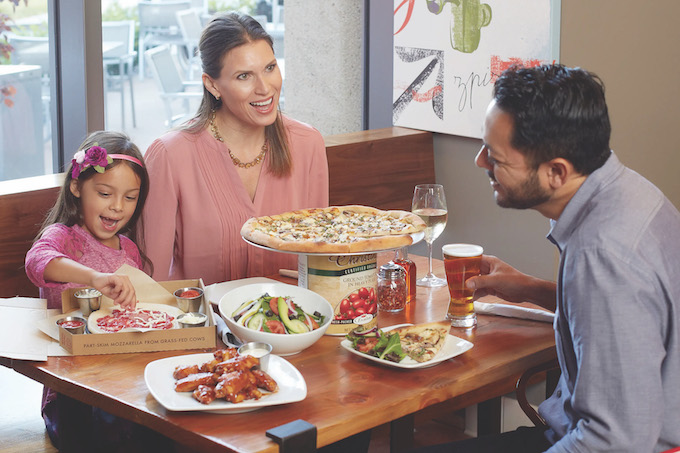
Fanarof, now 80, remains owner of the zpizza stores in Laguna (started in 1986) and Crystal Cove Shopping Center and is no longer involved with the company, which has more than a dozen locations across California and one in Arizona. And he’s still innovating. In recent months, he stumbled across a vegan cheese made from the protein in melon seeds, now used on the vegan pizzas as well as plant-based pepperoni and sausage options. “I think our vegan pizzas … are incredible,” he says. “We’ve had a lot of people coming for those.”
One piece of advice he shares to would-be local restaurateurs is to cater to the residents. “If you want to be successful, you have to be successful with Laguna, not with tourists,” who are only in town for a few months of the year. “Today, in Laguna,” he says, “we have the grandchildren of original customers being customers and there are also employees who are grandchildren of original employees working in our store.”
